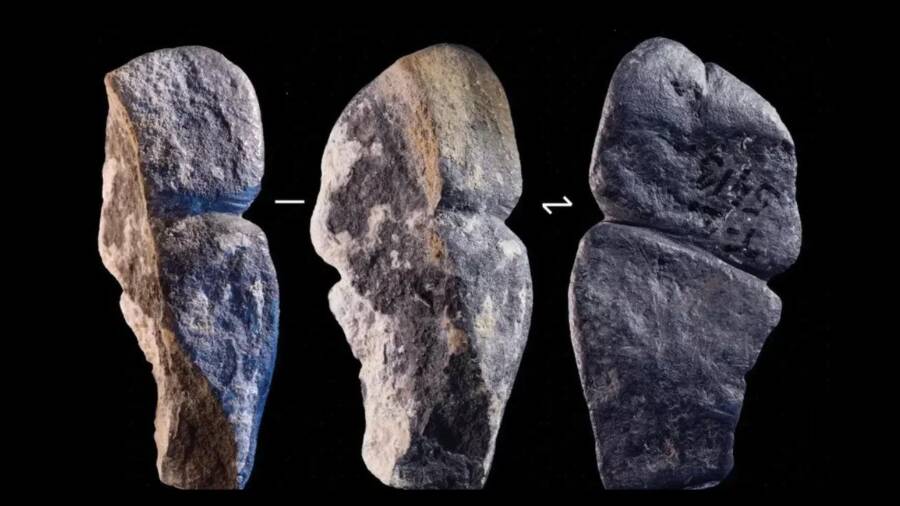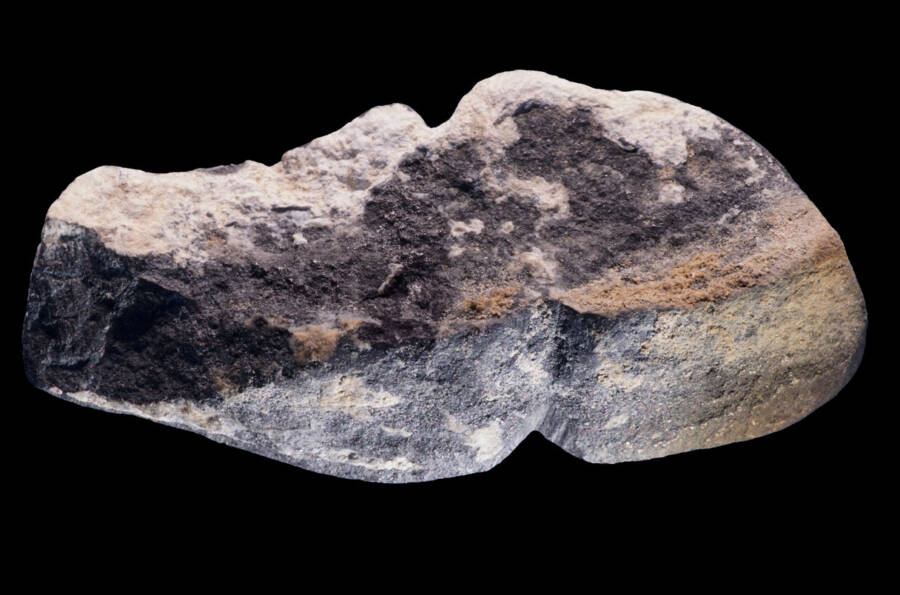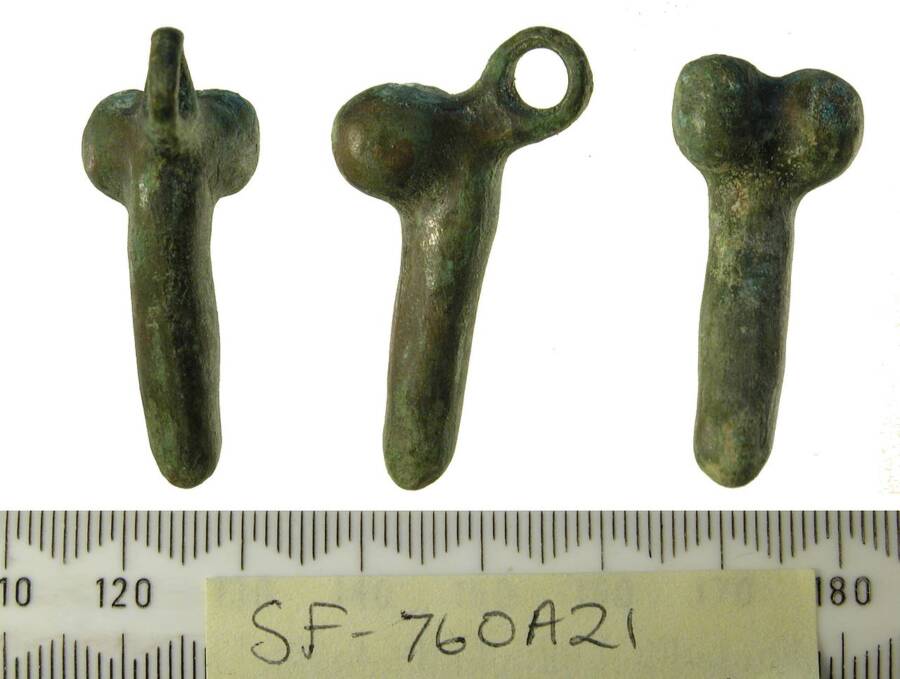The piece of graphite, likely once used as a pendant, was discovered in Mongolia and predates any other known artistic depiction of a phallus.

Solange Rigaud et al.This small piece of graphite may be the oldest-known phallic art ever discovered.
At first glance, this chunk of graphite found among Mongolia’s Khangai Mountains doesn’t look like much. But archaeologists believe that the 1.7-inch-long object is a carving of a phallus and, at approximately 42,000 years old, the oldest-known phallic art ever discovered.
According to a recent study published in Scientific Reports, careful details carved onto the graphite seem to identify it as a phallus. The ancient artist appears to have taken care to carve out a groove to make the urethra and to differentiate the glans from the shaft. There’s also a groove in the middle of the graphite which suggests that the stone was once worn as a pendant.
“Our argument is that when you want to represent something abstractly, you will choose very specific features that really characterize what you want to represent,” Solange Rigaud, an archaeologist at the University of Bordeaux and the study’s lead author, explained to the American Association for the Advancement of Science of the graphite’s seemingly purposeful markings.
Rigaud suspects that the pendant was an important possession to whoever once owned it. The graphite itself came from over 60 miles away from where it was found, and wear on one side of the stone suggests that someone frequently wore it around their neck. Indeed, it’s possible that the pendant was a treasured heirloom passed down through generations.
So why was the pendant made? And why was it worn with such pride?

Solange Rigaud et al.According to a recent study about the phallic pendant, its carver took care to include realistic details.
According to Rigaud, the pendant’s purpose isn’t obvious.
“It’s hard to know its exact function,” she told Live Science. “It’s possible that this person wore a body ornament as a way to transmit information to others showing their group identity, or it held a personal meaning to the wearer.”
Phalluses have played an important symbolic role in other, later cultures. For Greeks and Romans, phallic imagery was meant to bring good luck, ward off evil, ensure fertility, and signify abundance. Phallic imagery could be found on pendants like the Mongolian graphite but also in frescoes and mosaics.
The Mongolian phallic pendant may have played a similar role. But that’s assuming it’s a phallus at all, and some researchers have doubts.

The Portable Antiquities Scheme/ The Trustees of the British MuseumRoman phallic pendants found in Suffolk, England. For Romans, phallic imagery could symbolize good luck or protection from evil, among other things.
“[It’s] like a face in a cloud,” Curtis Runnels, an archaeologist at Boston University who was not involved in the study, told the American Association for the Advancement of Science. He called the Mongolian graphite carving a “small and rather shapeless object.” Runnels said he “would need to be convinced” that it’s a phallic pendant.
But Francesco D’Errico, another archaeologist not involved in the study (though he shares a lab with the study’s researchers), believes that Rigaud’s hypothesis about the graphite carving is compelling.
“The small size of the object, the exotic provenance of the raw material, and the… modifications are quite telling,” D’Errico told the American Association for the Advancement of Science. “I think the interpretation holds.”
In the end, the graphite carving may be the “earliest-known sexed anthropomorphic representation” ever found, but it’s not the oldest pendant that archaeologists have uncovered. According to Live Science, other similar finds far outdate the graphite carving, as archaeologists have found body ornaments made from animal teeth or shells that are around 130,000 to 150,000 years old in sites once inhabited by Neanderthals.
Wearing some kind of accessory, it seems, is a tale as old as time.
After reading about the possible phallic pendant found in Mongolia, which may be the oldest depiction of human genitalia ever found, see how archaeologists in Spain uncovered one of the largest phallic carvings known to man. Or, discover the story of this 2,000-year-old wooden phallus which may be the oldest Roman sex toy ever found.





